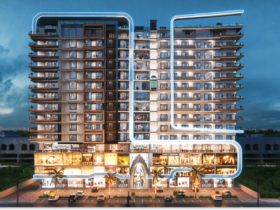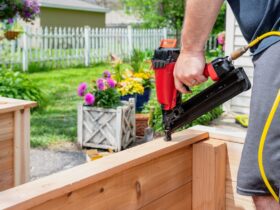Introduction
When you want to remodel your landscape and jazz it up to match all the fancy pictures you’ve seen on Instagram it’s a challenging task. That’s why most people like to search for “landscape companies near me” and let the professionals do their job. However, landscape designers are too polite to disagree with you on a few things. Let’s check out a few things landscape designers want you to know:
The Details
- Xeriscape is not what you think – Some people think that with a xeriscape you can escape the use of water. However, no living garden can survive without water. Even the most resilient drought-tolerant plants need years of irrigation to establish them deep in your soil. After they establish deep into the soil, they will still need water, even if it’s in very small quantities.
That’s why you shouldn’t expect a no-water system when you have a xeriscape. Instead, xeriscape has a smart irrigation system that does most of your work for you and helps to reduce manual labor drastically. After a few months of establishment, you dial down the irrigation system to figure out the stress point and then add a bit more time to maintain the plants in good health. That doesn’t mean all work gets eliminated. You have to adjust this system with the change of seasons.
- Your children will outgrow your space – When you have toddlers it’s hard to imagine how fast they may grow up and develop. With kids, time moves faster than you think. Before you finish your garden, your children will outgrow your tiny lawn before you can establish a new garden. That’s why you shouldn’t plan your landscape around your children.
When your kids are young, it’s best to let them release all that pent-up energy in the park. It also helps them socialize and make more connections with their peers. Meanwhile, you can plan an outdoor space for the future when your toddlers grow into teenagers. It can be a good hangout and relaxation space for your kids and your friends. It can be a private retreat for them within your property lines.
- Don’t opt for artificial grass – If you’ve fallen for the marketing campaigns about how artificial grass is the future, you’ve been scammed. Artificial grass isn’t just bad for the environment, it’s also bad for your wallet. It’s made of plastic that becomes a heat trap in the sun and releases toxic fumes for years. Moreover, the underlying granules of artificial grass can mix into the water system and make their way into your home.
If you want a sustainable lawn, go for a grass blend that is suited for your climate and needs as little care as possible. However, even the most efficient grass blend is going to be a water hog. To offset the high water consumption of the grass, you can plant natives and low-water plants everywhere else in your garden. To save even more time, you can go for a meadow or a no-mow lawn and never worry about weeding or fertilizing.
- A specimen tree won’t last forever – A specimen tree may not last forever. That’s why you shouldn’t design your home and your landscape around that. Before the designing process, consult a reputed arborist and find out the health and longevity of the tree. A tree may look very majestic. However, it can never look majestic enough to compromise the design of your home.
It’s great if a specimen tree is in good condition, healthy, and may survive for decades. If not, you can bring in a few big trees for the right spots and let them grow with your kids. All of them would become legacy trees and great conversation pieces whenever you host guests at your home.
- Gravel isn’t mulch – Some people don’t like to mulch. Decomposed mulch can look awful when it blows over your walkways and patio. However, that doesn’t mean you should replace mulching by laying gravel over the barren ground. Gravel can never replace the real mulch.
Gravel is heavier than mulch and won’t get blown around by the wind. However, it doesn’t provide any nutrients for the soil. If you want to avoid mulching, you may consider planting cover crops around the walkways and patios.
- Don’t cut corners – When you cut corners in expenses, you get a shoddy job. When you design your landscape, you need to keep a healthy margin for unexpected costs. You may incur unexpected costs due to additional infrastructure or foundation. You also need to factor in labor costs. A landscape contractor will have expensive charges when he hires well-trained, experienced, insured and background researched staff who are paid a living wage.
If you cheap out on the contractor, you may not get any of it. At best, you’ll have a poor finish on your landscape project, and in worst cases, you’ll have damaged property without any insurance backup. Quality landscape projects are always backed by skilled and experienced people. Picture-perfect Instagram landscapes may look easy to build, but they aren’t.
- Expect code changes and inspections – Most experienced landscape designers know that a landscape project may not be done in the set timeline. Anything related to land becomes a lengthy and inefficient process because of the changing codes and regulations.
State and federal regulations don’t have a major impact on your small landscaping project, and it may take years for new regulations to pass. However, the officials and staff at your local planning and building departments change often and they come up with new codes and regulations all the time. Sometimes codes are changed without the guidance of logic. That’s why you need to prepare for unforeseen circumstances.
Conclusion
Now that you know about all the above-mentioned things, you’ll know what kind of landscape designs are practical, sustainable, and don’t become an eyesore for you or anyone else in the future. Now you can look up “landscape companies near me” and hire professionals to beautify your property the way you want.








